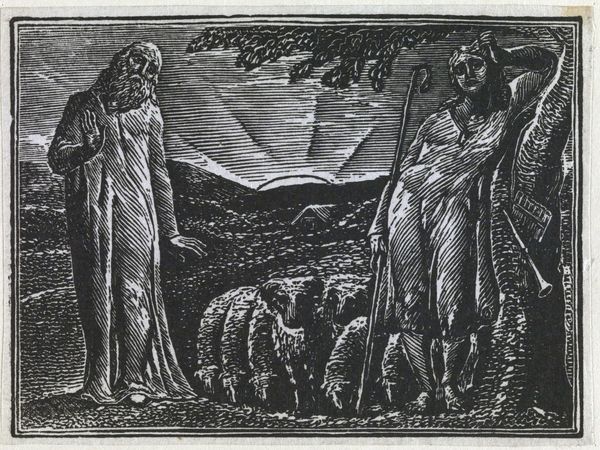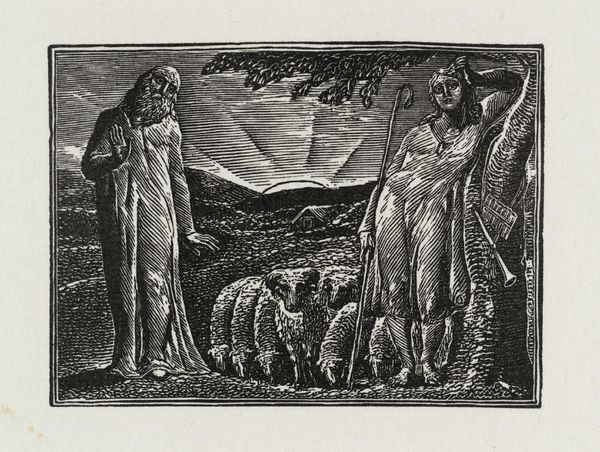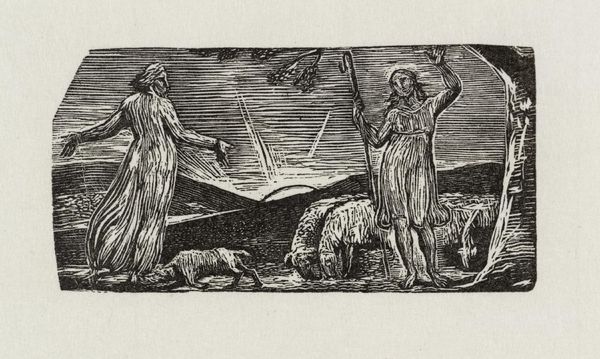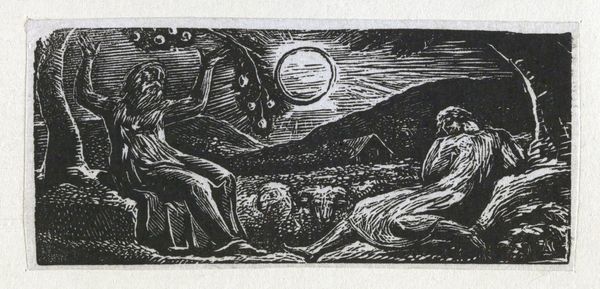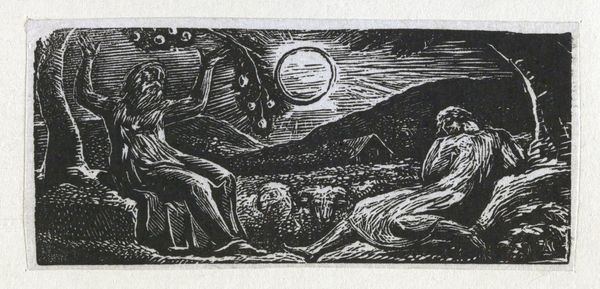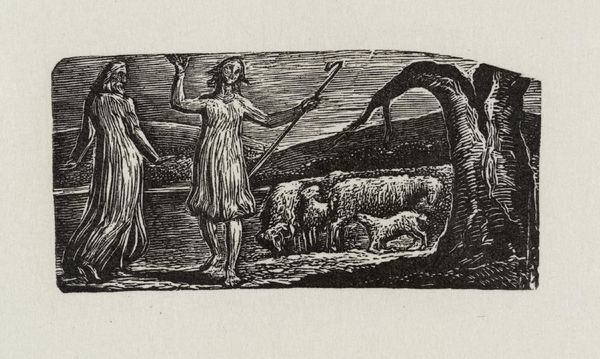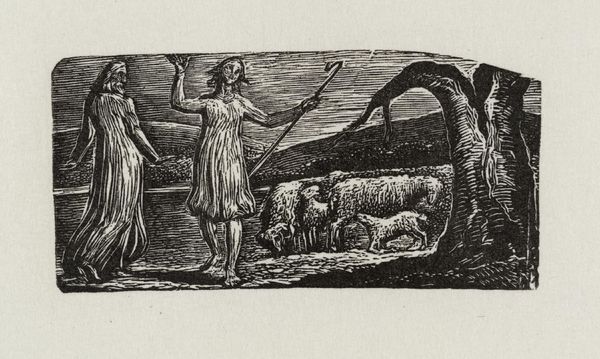
Dimensions: image: 62 x 84 mm
Copyright: NaN
Curator: This is William Blake’s “Frontispiece: Thenot and Colinet,” currently held in the Tate Collections, though its precise date of creation remains unknown. Editor: It has a stark, almost primitive quality to it, doesn’t it? The high contrast gives it a rather dramatic, if somewhat unsettling, pastoral feel. Curator: Indeed, its rough texture underscores Blake's experimentation with wood engraving, a relatively accessible medium that allowed him to control the entire production process, from design to printing. Editor: And that process deeply informed its reception. The art market was rapidly changing, becoming ever more professional and stratified. Was Blake commenting on that? Curator: Perhaps implicitly. He was certainly interested in disrupting the traditional hierarchies between fine art and printmaking, asserting the value of craftsmanship and individual artistry. Editor: I find it striking how the figures seem both idealized and grounded. The presence of the sheep reminds us of the labor involved in the myth of pastoral life. Curator: A fascinating point. I hadn't considered how he highlights the tension between the idealized pastoral and the material realities of rural existence. Editor: Well, seeing it in this context really makes me rethink Blake's relationship to his own time. Curator: Precisely. It's a reminder of how an artist's methods shape the work and its place in the world.
Comments
tate 4 months ago
⋮
http://www.tate.org.uk/art/artworks/blake-frontispiece-thenot-and-colinet-a00111
Join the conversation
Join millions of artists and users on Artera today and experience the ultimate creative platform.
tate 4 months ago
⋮
Samuel Palmer was the most important of Blake’s followers, known as the Ancients. Palmer first met Blake in 1824. He described these illustrations to an imitation of the First Eclogue by the Roman poet Virgil as ‘visions of little dells, and nooks, and corners of Paradise’. Palmer’s art was particularly influenced by them. These prints appealed to the Ancients because they were the result of Blake’s experiments with a new medium; he had never engraved on wood before. Even at the age of sixty-four he wanted to make further explorations in his art. Gallery label, August 2004
